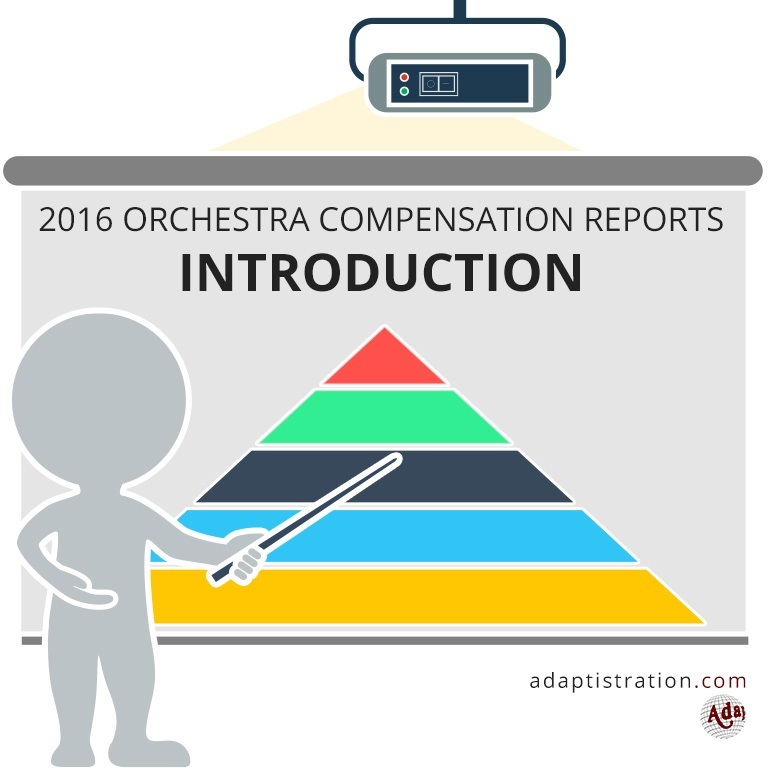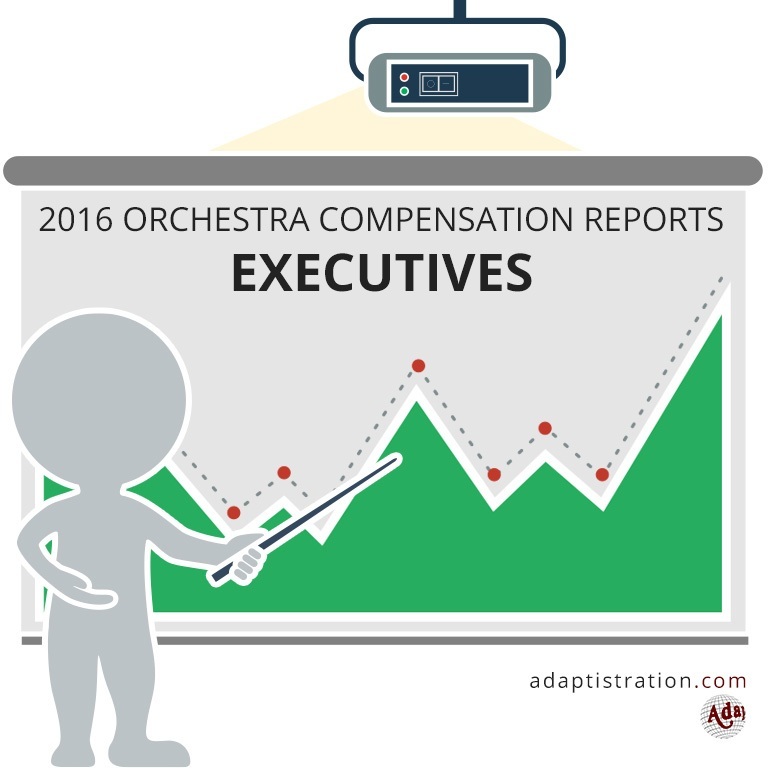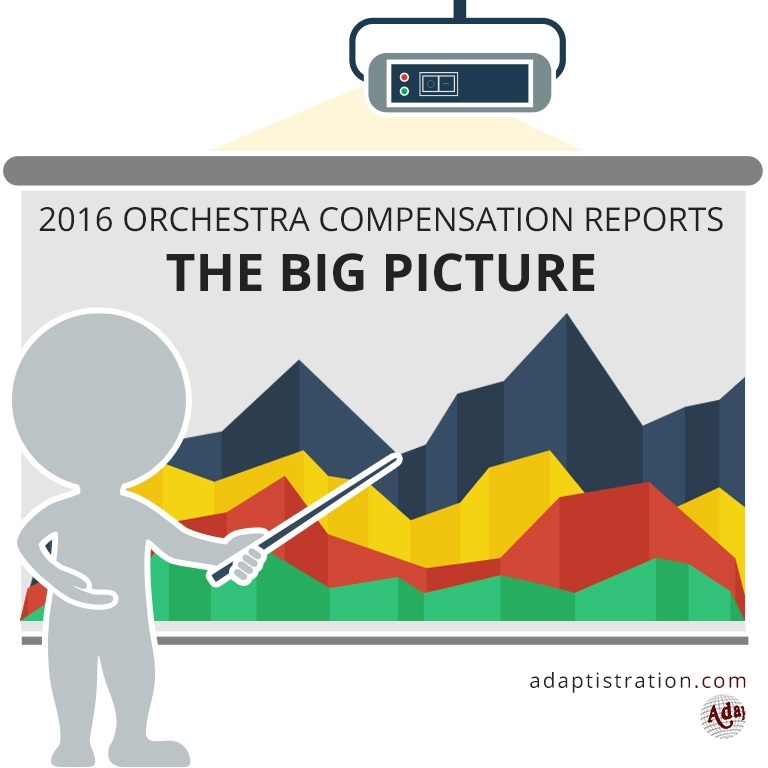The 2006 compensation reports are starting off a little differently as compared to previous years. This time around, the reports will begin with ROPA ensembles and with the ICSOM ensembles. Barring any unforeseen difficulties or pressing current events, the daily publication order will be ROPA executive directors, ROPA music directors, ICSOM executive directors, and ICSOM music directors and concertmasters.
Where The Numbers Come From
All data presented in these reports coincide with the corresponding documentation from the 2003-2004 season. In order to provide information that is as accurate as possible, data is gathered from the following sources:
- Executive Director (also called president and/or CEO) Compensation figures were obtained from their respective orchestra’s IRS Form 990 for the 2003-2004 concert season.
- Total Ensemble Expenditures were also obtained from each respective orchestra’s IRS Form 990 for the 2003-2004 concert season.
- Musician Base Salary figures were obtained from compensation records collected by the American Federation of Musicians and IGSOBM (Tucson) for the 2003-2004 concert season.
The executive director compensation figures include the combined amounts reported as what the IRS classifies as “compensation” and “contributions to employee benefit plans & deferred compensation”. However, each orchestra does not always report figures for the latter category.
The Musician Base Salary figures collected by the AFM for ROPA ensembles are done so on an annual basis and reported in a booklet entitled Wage Scales & Conditions in the Symphony Orchestra. However, the majority of “Musician Base Salary” figures are not salary figures at all since only nine of the ensembles pay a fixed salary to a portion of their musicians. The remaining musicians are all paid on a sliding “per service” scale.
Adaptistration makes no claim to the accuracy of information from documents compiled or reported by external sources. If you have reason to believe any of the information is inaccurate or has changed since reported in any of the above sources and you can provide documentation to such effect, please feel free to send in a notice.
What The Numbers Don’t Show
It is important to remember that the numbers shown do not always convey a complete compensation picture. For example, an executive director may have had a large increase in salary because they were leaving a position and per terms of their contract they may have received a sizeable severance or deferred compensation package. As such, the cumulative compensation may artificially inflate their annual earnings.
Furthermore, these figures may not reflect bonuses or other incentive payments, therefore underreporting what executives may actually earn. Also missing from the figures are expense accounts and other perks, which are rarely reported on the IRS Form 990’s. As such, the cumulative compensation for executive directors may or may not be more than what is listed.
Additionally, although there are indications noting when individuals were not employed for a full season, the documents used to gather data do not indicate how much of the season an individual received a salary. As such, excessive adjustments in the percentage change from the previous season’s compensation may be artificially exaggerated.
Unlike the vast majority of their peers in ICSOM ensembles who all earn no less than the “Musician Base Salary”, all ROPA ensembles use a tiered system of salary and/or per service payments. For example, although the Richmond Symphony may list a base musician salary of $28, 837, only 36 out of 85 musicians are covered by that base salary figure. The remaining players are paid using the sliding per service tier system and may earn as little as a few thousand dollars per season.
In the per service ensembles (19 out of 31), the figures listed in the “Musician Base Salary” are actually the average annual income earned by section string players (or section wind players if no information for the string players was available). This figure is reported by the AFM because it best represents annual earnings for the musicians who perform the greatest number of services in any per service orchestra; string musicians. However, those compensation figures are not guaranteed.
Additionally, the “Musician Base Salary” figures do not include any additional payments offered by some organizations such as voluntary outreach services, and minimum overscale payments.
Finally, these figures do not include any of the opera or ballet organizations which are members of ROPA or IGSOBM.
How Things Compare To Last Year
- According to these figures, the average ROPA executive director earns 722% more than an average base salary musician.
- Compared to the figures from the 2002-2003 season, the average ROPA executive director continued to earn more than the previous year and the average base musician compensation moved from a negative to positive growth.
- Although the average rate of increase in compensation continues to favor executive directors, the gap between average executive director and base musician compensation narrowed in the 2003-2004 season to the closest it has been since the 1999-2000 season.
- For the first time in the history of ROPA executive directors, the average annual compensation figure exceeded the six figure mark whereas the average ROPA base musician compensation is a hair under the Poverty Threshold for a two person family unit.
- For the first time in the history of ROPA executive directors, one individual’s compensation exceeded the $200,000 mark.
Who Earns The Most?
The number of executive directors earning over $100,000 in annual compensation remained the same from the 2002-2003 season to the 2003-2004 season:
- Toledo Symphony’s Robert Bell earned $229,827
- Omaha Symphony’s Robert Hallam earned $160,500
- Rhode Island Philharmonic’s David Wax earned $158,686
- Pacific Symphony’s John Forsyte earned $157,191
- Austin Symphony’s Jim Reagan earned $134,112
- Fort Wayne Philharmonic’s Christopher Guerin earned $128,482
- Grand Rapids Symphony’s William Ryberg earned $127,761
- Dayton Philharmonic’s Curtis Long earned $124,200
- Hartford Symphony’s Charles Owens earned $119,382
- Wichita Symphony’s Mitchell Berman earned $110,300
Who Gained The Most?
The following ROPA ensembles increased their executive director’s annual compensation by no less than four times the average ROPA executive director increase of 5.86%:
- Harrisburg Symphony increased executive compensation by 40.73%.
- Omaha Symphony increased executive compensation by 34.36%.
- Chattanooga Symphony increased executive compensation by 32.90%.
- Erie Philharmonic increased executive compensation by 28.56%.
- Toledo Symphony increased executive compensation by 28.17%.
Conclusions
The debate surrounding whether or not ROPA ensemble executive directors should be earning in excess of 700% more than the average musicians in their orchestra is one which stirs up intense emotions among musicians and managers alike. Nevertheless, the individuals responsible for setting executive compensation are the board of directors; in particular, the board’s executive committee (commonly referred to as the executive board). How an executive board determines compensation for incoming executives and evaluate/review current leaders is an issue which is often overlooked in this business.
It is likely that most individuals would agree that the majority of executive directors work very hard for their organizations. Nevertheless, are effort and achievement indistinguishable? Are executive board members merely compensating effort over achievement in lieu of instituting satisfactory review procedures?
Consequently, most discussions surrounding these questions boil down to the issue of value: is the executive in question producing results which justifies their compensation. As a result, this discussion point shifts the focus once again to the executive board. Perhaps the entire business would be best served if executive boards made the process they use to conduct executive evaluation/review activities open to the public. This isn’t to say that the actual review should be made public, merely the process.
Adequate processes tend to be very time consuming. Not only do executive board members need to evaluate income and expense data, they also need to conduct interviews with subordinate administrators, staffers, the conducting staff, volunteer leaders, elected musician representatives, as well as community and business representatives the organization does business with. Given the fact that for most executive board members time is already among the least abundant resources at their disposal; as a result, implementing an ideal review/evaluation process is difficult.
Nevertheless, given the fact that most ROPA executive compensation levels are rapidly exceeding six figures and the average Total Ensemble Expenditures top the $3 million mark, executive board members have an inherent responsibility to perform a review/evaluation process that adequately rewards success and brings failure to task.



